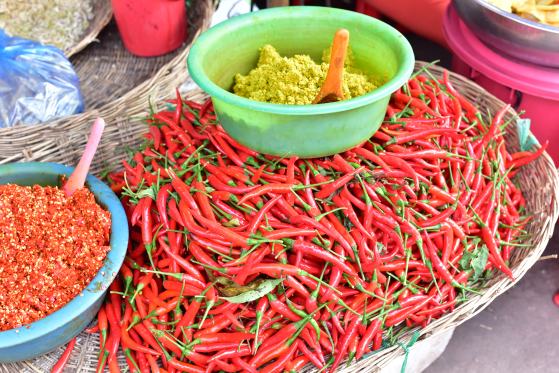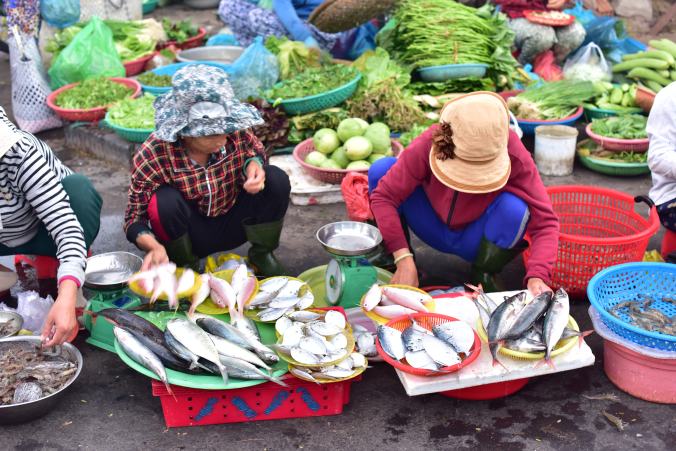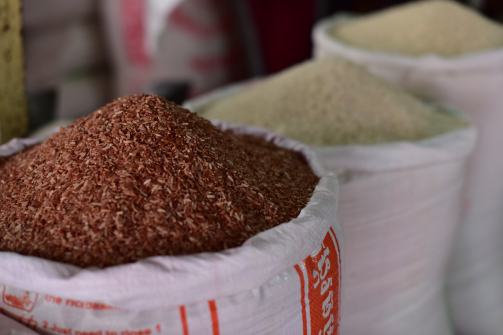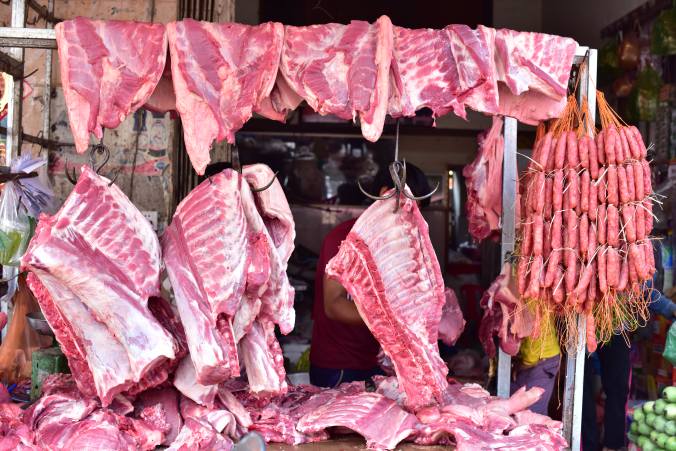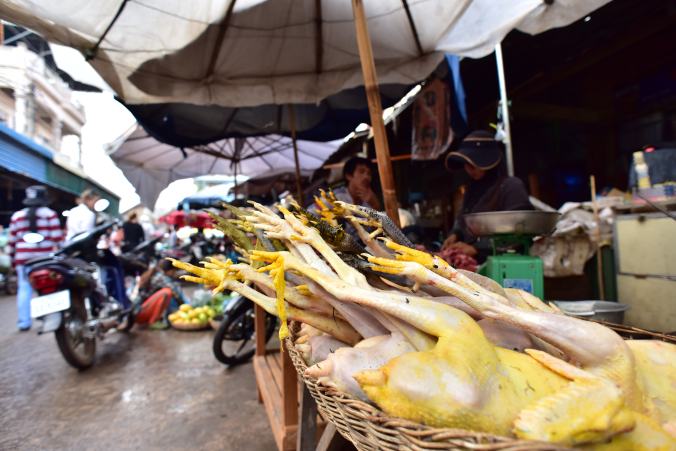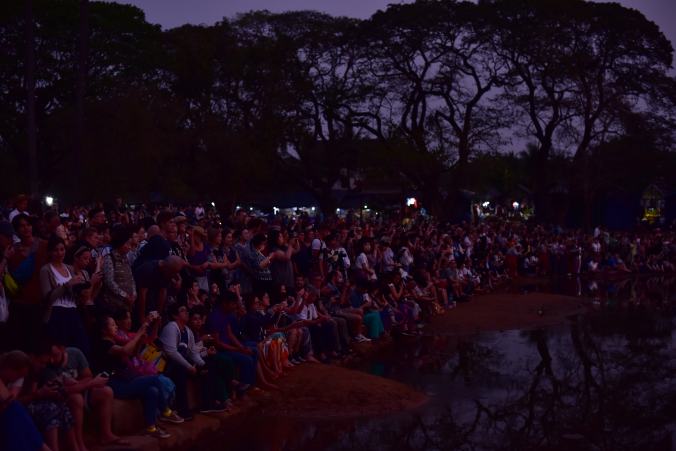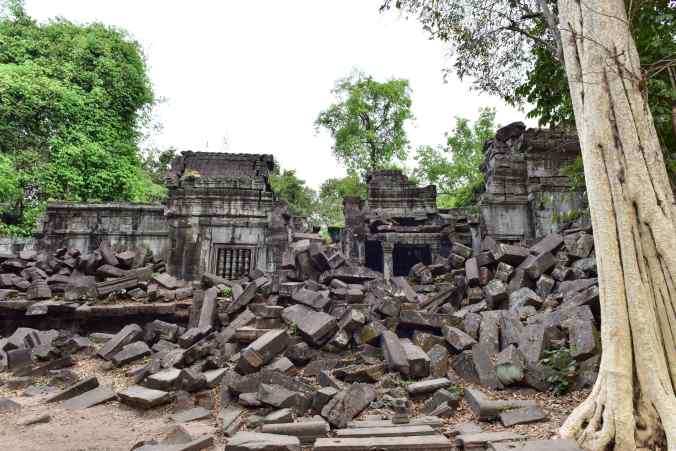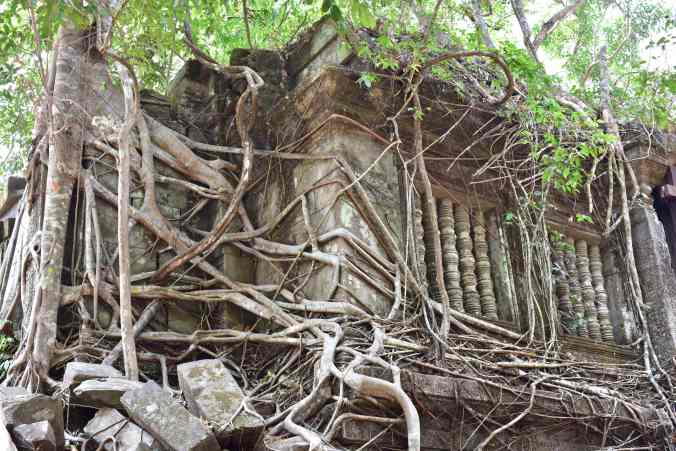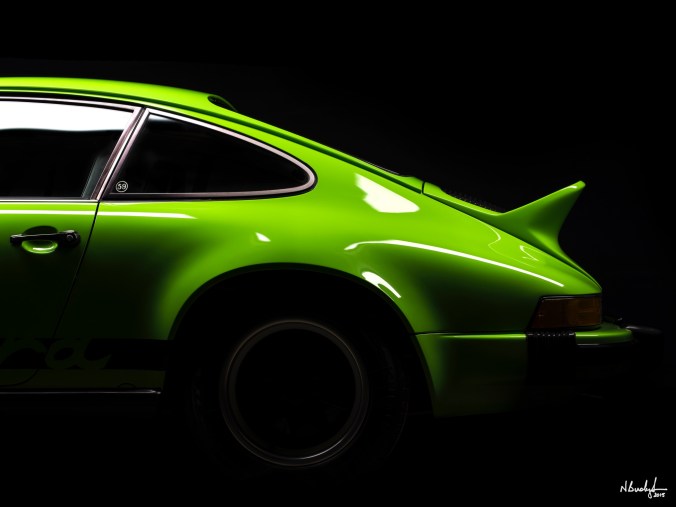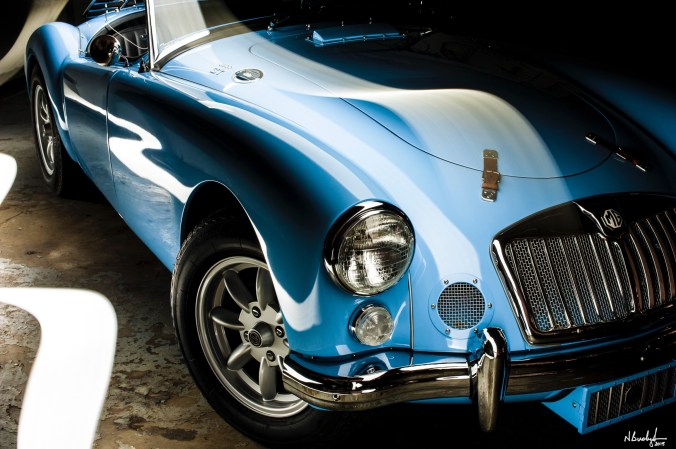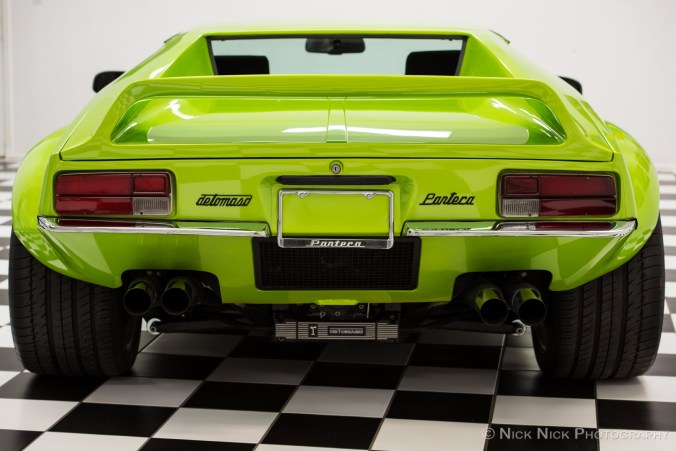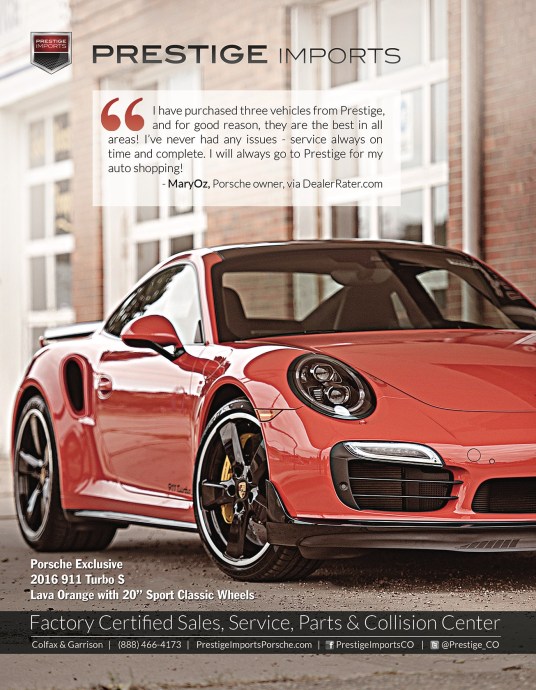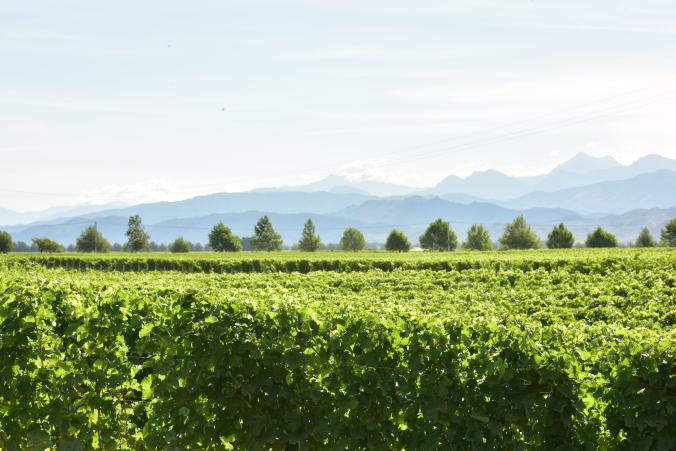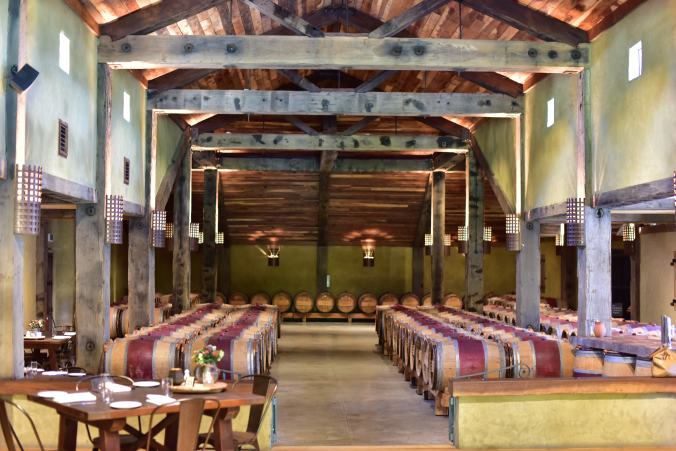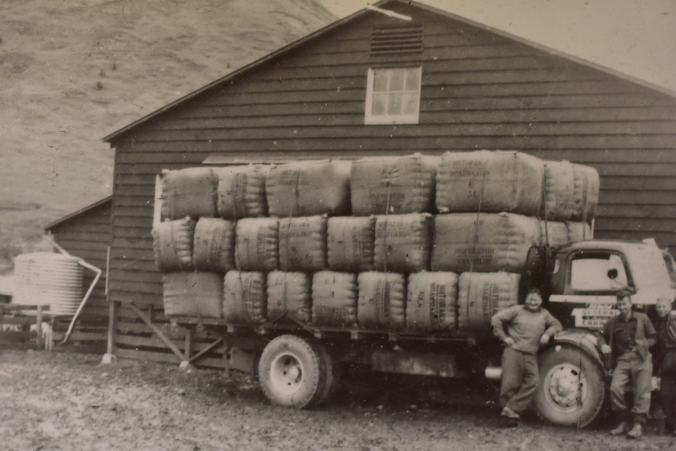Thus far on this trip, we’ve used just about every imaginable method of transportation, so long-distance trains in Vietnam fit perfectly into our plans.

Hazy sunrise over the rice paddies.
Long-distance trains were established by the French in Vietnam in the 1880s; the North-South line, connecting Hanoi and Ho Chi Minh City (formerly Saigon), opened in 1936. The line was cut in 1954 at the beginning of Vietnam’s war against the French when the country divided into North and South. It was rebuilt in 1976 and is still known to many as the Reunification Express.

No one is striving for architectural greatness at these train stations.

Though it’s officially called Ho Chi Minh City, the station signage and the timetables still use Saigon. We’re not certain which one is socially correct.

It is advisable to purchase snacks for the journey from the station vendors, though they will almost certainly shortchange you.

This doesn’t show the large family groups camped in the room behind, but the waiting rooms are clearly both luxurious and comfortable.

Unlike the precision of Japan, Vietnamese trains are on a bit more of a casual schedule.

A four-bed “soft sleeper” cabin.
Train accommodations in Vietnam come in fairly self-explanatory flavors: hard seat, soft seat, hard sleeper and soft sleeper; sleepers can be either four-bed or six-bed. We first used soft seats for day trains, but learned the hard way that this meant we’d be subjected to Vietnamese musicals played on the communal televisions at ear-splitting volume. Presumably this was very enjoyable for the Vietnamese passengers, but it did diminish our love of train travel somewhat. So did the physically aggressive food vendors who hopped on board at stations.



This rice paddy photo is clearly lacking the iconic tiny Vietnamese woman in a conical cap.

Everything – and we mean everything – is under construction in Vietnam. This includes every single hotel we stayed at.

Railway crossings are not automated, so the train employee runs to shut the barrier as the train passes.
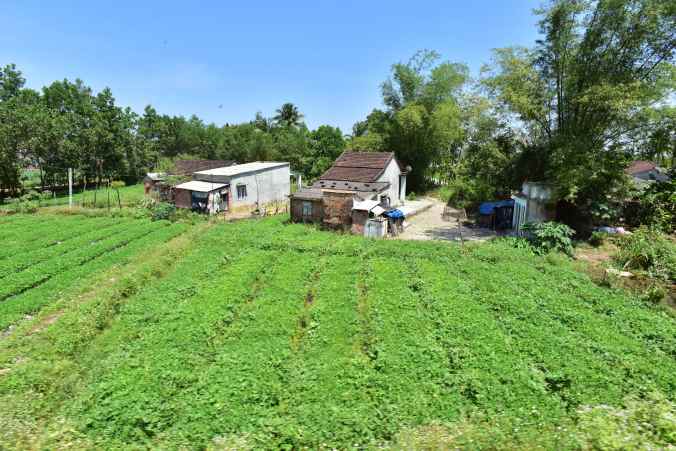

Almost every house we passed had a large vegetable garden.
In addition to the vegetable gardens we saw at most homes, families also harvest part of communal rice paddies. Their allotment is determined by the size of the family, so there is certainly an incentive to have more children. Obviously, no one actually owns land here; land is theoretically owned collectively by the people, but of course in reality controlled entirely by the government.

On many occasions, we passed close enough to touch the buildings outside.

We were a little surprised by the cavalier attitude towards crossing live tracks, but when in Vietnam…

We finished our train journey about halfway up the coast at Da Nang, or “China Beach” to Americans.





















